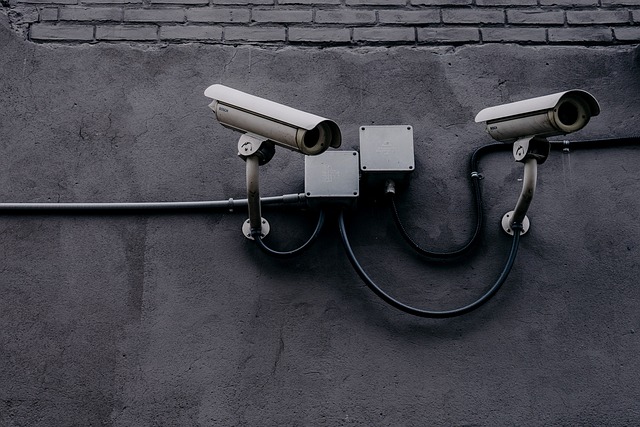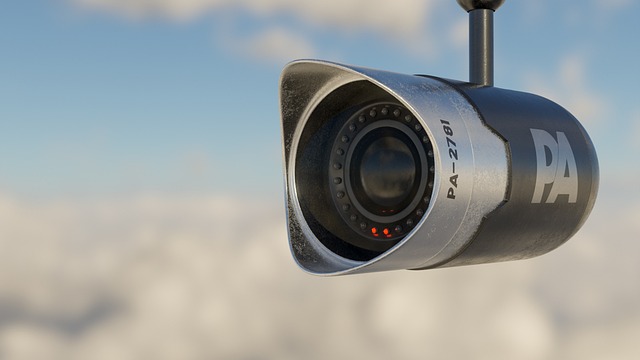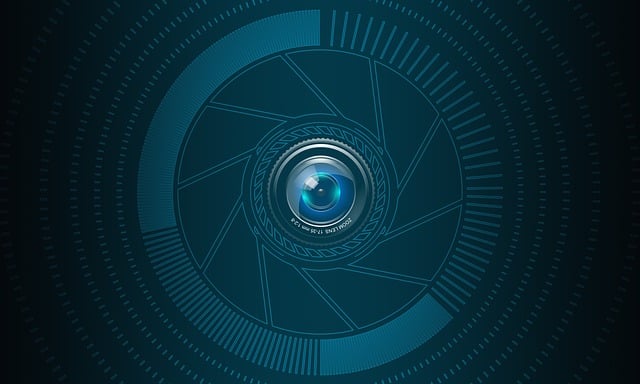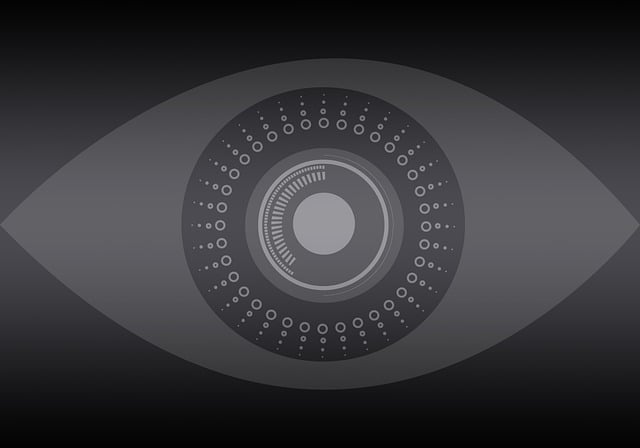In today's age of smart homes, a comprehensive home security system centered around CCTV surveillance is essential for effective protection. This system should feature high-definition cameras with night vision capabilities strategically placed both indoors and outdoors to cover all vital areas, ensuring no blind spots remain. Motion detectors should be integrated to trigger immediate alerts or recordings upon sensing movement, complementing the advanced access control mechanisms like smart locks that offer convenient yet secure management of entry points. A central control panel, accessible remotely via smart devices, serves as the command center for live monitoring and managing other security components, including alarm systems that can alert both homeowners and law enforcement. Homeowners should prioritize high-resolution cameras with infrared capabilities, state-of-the-art motion detection technology, and secure cloud storage for footage to maintain oversight when offsite. Integrating CCTV systems with a smart home platform allows for remote access, minimizing nuisance alarms by differentiating between various types of movement using AI. The inclusion of IoT devices can extend the security network to detect environmental hazards and deter burglars with smart lighting solutions.
Following installation, it's crucial to customize settings, ensure all devices are functioning correctly, and perform thorough testing to validate coverage and system responses. Regular updates to the system's firmware and software are necessary to incorporate security patches and new features, maintaining an effective defense against vulnerabilities. This proactive approach emphasizes the importance of a well-maintained CCTV surveillance and smart technology integration for optimal home security.
In an era where technology blends seamlessly with our daily lives, advanced smart home security systems stand as a testament to modern innovation in safeguarding our residences. This article delves into the intricacies of setting up a robust system that combines home security with cutting-edge CCTV and integrated smart devices. We’ll explore the essential components, guide you through strategic planning for optimal coverage, help select the ideal CCTV cameras for surveillance, and integrate these elements for enhanced protection. Concluding with best practices and post-installation protocols, this piece ensures your home security system operates at its zenith.
- Understanding the Components of an Advanced Smart Home Security System
- Step-by-Step Guide to Planning Your Smart Home Security Layout
- Selecting the Right CCTV Cameras for Optimal Surveillance Coverage
- Integrating Smart Devices with Your Security System for Enhanced Protection
- Finalizing Installation: Best Practices and Post-Installation Steps for Peak Performance
Understanding the Components of an Advanced Smart Home Security System

In a modern smart home security system, understanding the components that safeguard your residence is paramount for effective protection. At the core of any comprehensive security setup lies the CCTV surveillance system, which offers real-time monitoring and recording capabilities. This network of cameras should be strategically placed both inside and out to cover blind spots and provide full visibility of your property. These cameras are equipped with high-definition resolution, allowing for clear identification of individuals or activities that may pose a threat. Additionally, smart home security systems often integrate motion detectors, which trigger alarms or recordings when unexpected movement is detected, ensuring that any unauthorized entry is promptly identified and addressed.
Beyond visual surveillance, advanced smart home security systems incorporate access control mechanisms such as smart locks and biometric authentication devices, which can include fingerprint scanners or facial recognition technology. These not only deter intruders by making unauthorized entry more difficult but also provide the homeowner with a convenient way to manage who has access to their home. Furthermore, these systems are frequently connected to an integrated alarm system that can alert homeowners and law enforcement of potential security breaches, often with the option for remote arming and disarming via smartphone applications. This seamless integration of hardware and software components enables homeowners to maintain a vigilant watch over their property, even when they are not physically present.
Step-by-Step Guide to Planning Your Smart Home Security Layout

When planning your smart home security layout, it’s crucial to assess your home’s vulnerabilities and entry points. Begin by mapping out your property, noting all doors, windows, and potential hiding spots an intruder might exploit. Once you have a clear understanding of your home’s architecture, select strategic locations for CCTV cameras to achieve comprehensive surveillance coverage. Position cameras at entry points, blind spots, and areas with valuable assets. Ensure that these cameras are installed at heights unreachable by an average individual to deter tampering.
After setting up the physical layout of your security system, integrate it with a central control panel that can be accessed remotely via a smartphone app or computer. This control panel should be the nerve center of your home security system, allowing you to monitor live feeds from your CCTV cameras, receive alerts, and control other integrated devices such as smart locks and motion detectors. Remember to select a system that offers secure cloud storage for your surveillance footage, ensuring that your home remains protected even when offsite. Utilize high-resolution cameras with night vision capabilities to guarantee round-the-clock monitoring, providing peace of mind and enhancing the security of your home.
Selecting the Right CCTV Cameras for Optimal Surveillance Coverage

When selecting CCTV cameras for your smart home security system, it’s crucial to consider the home security needs specific to your property. High-definition CCTV cameras should be installed to capture clear images, especially in areas where intrusions are most likely to occur. Positioning cameras strategically ensures that blind spots are minimized and that coverage is comprehensive. Infrared capabilities are a must for nighttime surveillance, providing around-the-clock monitoring regardless of lighting conditions. Additionally, opt for cameras with advanced motion detection features to alert homeowners of any suspicious activity in real-time, enhancing the overall effectiveness of your home security system.
For optimal surveillance coverage, integrate CCTV cameras with a smart home platform that allows for remote access and storage of footage. This integration enables homeowners to monitor their property from anywhere at any time, ensuring peace of mind. Furthermore, choosing cameras with wide-angle lenses and pan-tilt-zoom functionalities can provide broader views of larger areas, adapting to various situations as needed. It’s also beneficial to consider cameras with artificial intelligence capabilities that can differentiate between people, animals, and vehicles, reducing false alarms and focusing on genuine security threats.
Integrating Smart Devices with Your Security System for Enhanced Protection

In today’s technologically advanced world, integrating smart devices with your home security system can significantly enhance protection beyond traditional CCTV and surveillance measures. Advanced systems now offer seamless connectivity that allows for real-time monitoring and control directly from a smartphone or tablet, providing homeowners with a sense of security that is both comprehensive and convenient. For instance, smart locks can grant temporary access codes to trusted individuals while denying entry to potential intruders, all managed remotely through a unified app interface. Similarly, smart cameras equipped with motion detection and night vision capabilities ensure constant surveillance, sending instant alerts to your device if any unusual activity is detected, ensuring that homeowners are aware of their property’s safety at all times.
The integration of IoT-enabled devices into the security framework adds an additional layer of protection by enabling a smart ecosystem where each device communicates and coordinates with the others. Smart sensors can detect environmental changes like temperature fluctuations or water leaks, potentially preventing disasters before they occur. Additionally, integrating your home security system with smart lighting solutions can simulate occupancy, deterring potential burglars who might target an empty home. This sophisticated network of interconnected devices not only enhances the responsiveness of your security system but also makes it more intelligent and proactive in protecting your property.
Finalizing Installation: Best Practices and Post-Installation Steps for Peak Performance

After the physical installation of your advanced smart home security system, including components like CCTV cameras for surveillance, it is crucial to follow a series of best practices to ensure optimal performance. Begin by powering up each device and double-checking all connections to prevent any loose wires that could compromise the system’s integrity. Utilize the system’s software to configure settings such as motion detection sensitivity and recording schedules tailored to your home security needs. It’s essential to integrate smart home devices seamlessly, enabling them to communicate with each other, share data, and enhance overall security. Ensure that all mobile devices and apps associated with the system are up-to-date to take advantage of the latest security protocols and features.
Once installation and initial configuration are complete, perform a comprehensive test of your system. Activate the CCTV surveillance cameras and monitor their coverage in real-time, ensuring blind spots are minimal. Test all alarms, sensors, and automated responses to confirm they operate as intended. Additionally, verify that all remote access features function properly from various devices, including smartphones and tablets. Post-installation, regularly update your system’s firmware and software to incorporate the latest enhancements, security patches, and threat intelligence. This proactive approach to maintenance will help safeguard your home against potential vulnerabilities and ensure your smart home security system remains a robust line of defense.
In conclusion, advancing your home’s security through a sophisticated smart home system is a prudent step towards safeguarding your residence. By carefully considering each component and strategically planning your system layout, you can ensure comprehensive coverage and robust protection. Selecting the right CCTV cameras tailored to your property’s unique requirements is key to effective surveillance. Furthermore, integrating smart devices with your security system not only enhances your home’s defenses but also offers a seamless user experience. Following best practices during installation and adhering to post-installation maintenance protocols are crucial for maintaining optimal performance. Embrace the future of home security with confidence, knowing that your investment in these systems provides unparalleled peace of mind and safety for your loved ones and valuables.
